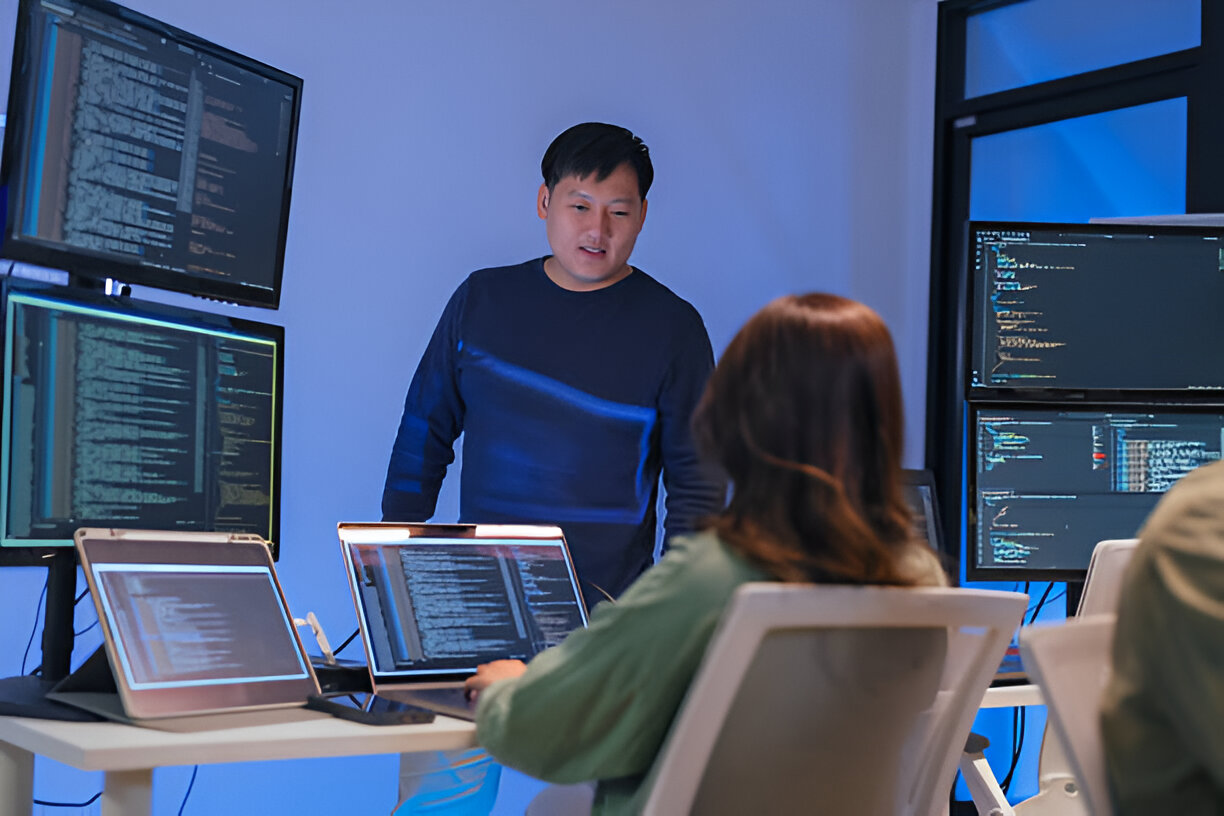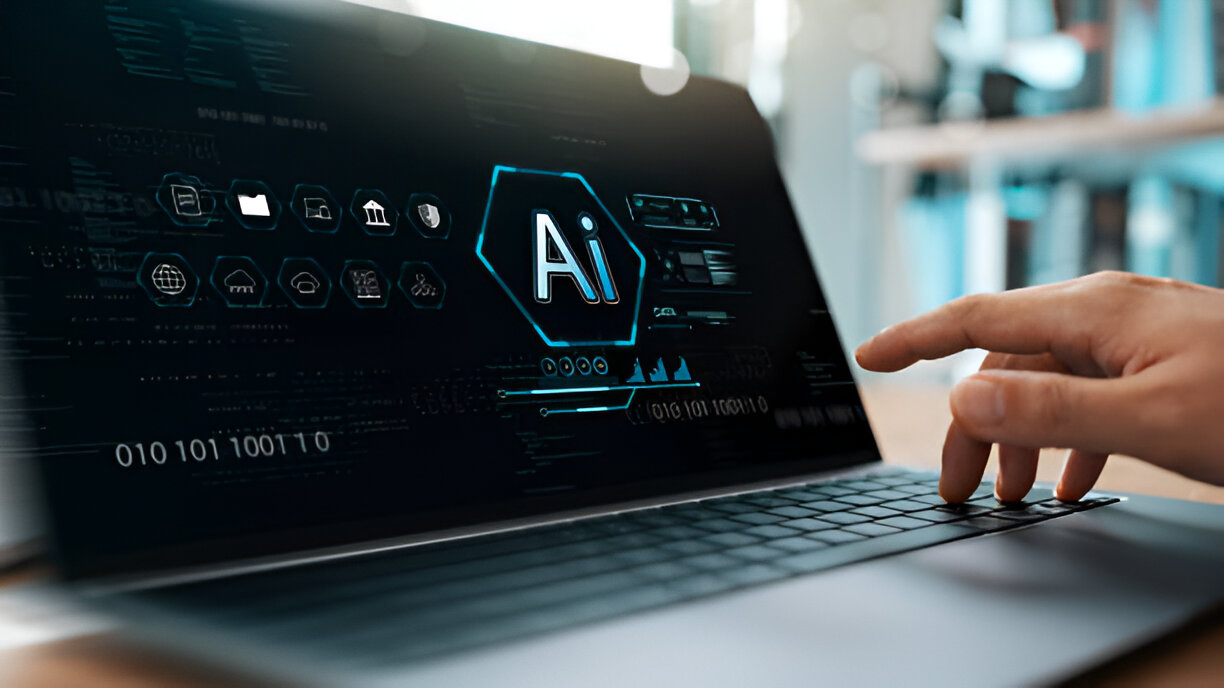Ever felt like your software projects take forever, cost too much, and still miss the mark? You’re not alone. Traditional software development can be slow, rigid, and expensive. But what if AI could flip the script?
In this breakdown of AI software development vs traditional, we’ll show you how artificial intelligence is transforming the software development life cycle — making it faster, more efficient, and more cost-effective than ever.
What is Software Development Life Cycle (SDLC)?
The software development life cycle (SDLC) is the structured process developers follow to create high-quality software. It typically involves several phases: planning, analysis, design, implementation, testing, deployment, and maintenance.
Each phase builds upon the last to ensure that the final product meets business requirements and user needs. In traditional development, these stages are often completed sequentially or iteratively, depending on the model used — such as Waterfall, Agile, or Scrum.
Understanding what is software development life cycle is essential to appreciating how AI is reshaping it. Rather than replacing SDLC, AI-enhanced workflows improve and accelerate each stage. AI tools offer predictive insights during planning, automate code writing during implementation, and even detect bugs automatically during testing.
While SDLC remains the backbone of software development, AI is fast becoming the nervous system that powers its responsiveness and efficiency.
Traditional Software Development: Strengths and Limitations
Traditional software development has long provided the discipline and predictability needed to deliver robust systems. With clear processes and role definitions, it gives teams a shared structure that promotes accountability.
In models like Waterfall, development follows a linear path. Agile and Scrum, by contrast, promote flexibility through sprints and ongoing stakeholder feedback. These models have powered enterprise software, mobile apps, and backend systems for decades.
That said, traditional development has significant drawbacks in today’s fast-moving digital economy. Projects often face extended timelines due to manual handoffs, slow feedback loops, and intensive quality assurance. Adjusting to changes mid-project can also derail scope, delay launches, and drive up costs.
For example, if a fintech company needs to pivot mid-way to comply with updated regulations, a traditional workflow may require weeks of replanning and reallocation. In contrast, AI-driven development can adapt almost in real time, offering more agility.
The key issue isn’t that traditional development is broken — it’s that it’s struggling to keep pace with the speed and complexity of modern innovation.
AI Software Development: A New Paradigm in SDLC
AI software development reimagines how teams build, test, and deploy applications by injecting intelligence into every phase of the SDLC. Rather than performing tasks manually, developers now have access to tools that can write code, identify bugs, optimize performance, and even predict user behavior.
Take the planning stage: AI systems analyze historical project data, market trends, and customer feedback to refine requirements. During implementation, developers use platforms like GitHub Copilot X or Replit Ghostwriter to generate accurate code snippets in real time. Testing becomes dramatically more efficient as AI detects bugs, predicts failure points, and auto-generates test cases.
In 2025, many teams are leveraging tools like Testim.io for AI-driven test automation, Snyk for smart security scanning, and AWS CodeWhisperer to accelerate backend development. These tools not only increase velocity but also reduce the cognitive load on human developers, allowing them to focus on design, strategy, and innovation.
Importantly, AI doesn’t replace developers — it amplifies them. By removing repetitive tasks and automating error-prone processes, teams can deliver more robust software in less time, with fewer people.
The result is not just faster delivery, but better alignment with customer needs and business goals. In an era where speed and adaptability define market success, AI software development gives organizations a decisive edge.
Cost-Benefit Analysis: AI Software Development vs Traditional
Evaluating AI software development vs traditional requires a clear understanding of cost, time, quality, and return on investment.
At first glance, traditional development appears more affordable. There are fewer licensing fees and minimal training overhead. But as the project progresses, costs pile up — in labor, time delays, and technical debt from rushed fixes or incomplete testing.
AI-led development, while requiring investment in tools and onboarding, quickly offsets that with accelerated delivery cycles and fewer bugs in production. Projects that once took a year can be completed in half the time, with fewer developers, and more predictable outcomes.
From a financial standpoint, AI delivers long-term ROI by reducing the hours required for coding and QA, minimizing downtime post-launch, and cutting maintenance costs through predictive monitoring.
Quality is another differentiator. Traditional development relies on human QA processes that can miss edge cases or introduce regression bugs. AI, on the other hand, continuously tests code, flags potential issues before they reach production, and learns from past errors to improve future results.
Scalability also favors AI. As systems grow in complexity, traditional methods often struggle to keep up. AI-driven workflows, built on cloud-native architectures, can scale automatically, adapting to performance demands and user growth.
If your goal is to deliver better software faster and cheaper, AI makes a compelling case. Not every project needs full automation, but even partial integration can yield measurable benefits.
Future Trends and Considerations
Looking ahead to 2025 and beyond, AI software development will continue to evolve. But it’s not without trade-offs.
Emerging Trends:
- Generative AI agents: Fully autonomous systems building small-scale apps
- Natural language programming: Prompt-driven development becomes mainstream
- AI DevOps: Smart monitoring, bug prediction, and automated rollbacks
- ModelOps integration: Managing and deploying ML models with SDLC principles
Risks and Challenges:
- Data Privacy: AI systems require access to large datasets — sensitive info must be handled securely
- Bias & Ethics: Machine-generated code may replicate biased patterns or vulnerabilities
- Developer Roles: AI shifts developer focus from writing code to supervising outcomes
- Tool Overload: Not all AI tools are created equal — vet before investing
When AI Isn’t the Right Fit:
- Regulatory-heavy environments with strict compliance needs
- Projects with high creative freedom or novel frameworks
- Early-stage teams lacking AI literacy or infrastructure
Hybrid is the new normal. Many successful teams combine AI tooling with Agile practices and traditional checkpoints. This hybrid model offers flexibility without sacrificing governance.
Conclusion
AI software development isn’t just a buzzword — it’s a fundamental shift in how we build, deploy, and maintain applications. When compared to traditional development, it offers faster timelines, lower long-term costs, and significantly better adaptability.
That doesn’t mean traditional development is obsolete. It still has value in specific contexts, especially where compliance or custom workflows demand strict governance. But for most teams aiming to compete in today’s fast-paced markets, the future is clearly AI-enhanced.
At WildnetEdge, we help businesses transition from legacy workflows to AI-augmented development pipelines. With deep expertise in both traditional and AI-driven SDLCs, we support you at every step — from strategy to execution.
If you’re looking to modernize your development approach without losing control, we can help you make the shift confidently and cost-effectively.
FAQs
Q1: What is AI software development and how does it differ from traditional methods?
AI software development uses machine learning and automation to accelerate coding, testing, and deployment. Traditional methods rely more on manual work and longer timelines.
Q2: What is the software development life cycle (SDLC) in AI projects?
In AI projects, SDLC still includes planning, design, implementation, and testing — but AI tools make each phase faster and more data-driven.
Q3: Is AI software development more cost-effective?
Yes. While AI tools may require initial investment, they reduce development time, lower bug rates, and cut maintenance costs, leading to long-term savings.
Q4: Can AI replace traditional developers?
No. AI assists developers with repetitive tasks, but human creativity, strategic thinking, and complex problem-solving are still essential.
Q5: When should a business choose AI software development?
AI is ideal when speed, scalability, and adaptability are priorities. For static, regulated, or highly customized projects, a hybrid approach may work better.

Nitin Agarwal is a veteran in custom software development. He is fascinated by how software can turn ideas into real-world solutions. With extensive experience designing scalable and efficient systems, he focuses on creating software that delivers tangible results. Nitin enjoys exploring emerging technologies, taking on challenging projects, and mentoring teams to bring ideas to life. He believes that good software is not just about code; it’s about understanding problems and creating value for users. For him, great software combines thoughtful design, clever engineering, and a clear understanding of the problems it’s meant to solve.
 sales@wildnetedge.com
sales@wildnetedge.com +1 (212) 901 8616
+1 (212) 901 8616 +1 (437) 225-7733
+1 (437) 225-7733































